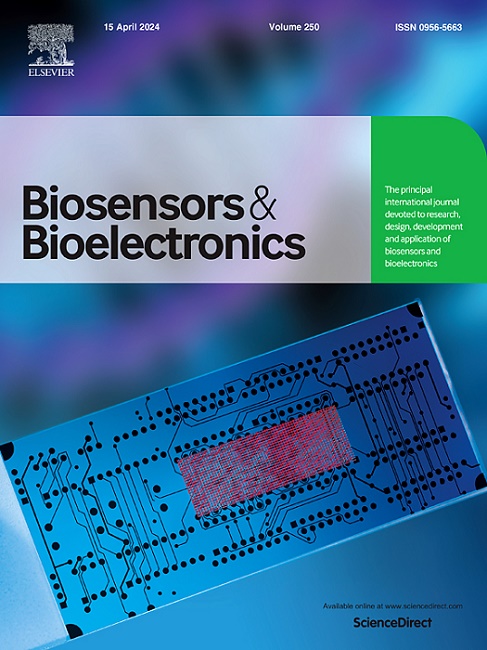探索扫描电化学探针显微镜在单一实体分析在生物学:过去,现在和未来。
IF 10.5
1区 生物学
Q1 BIOPHYSICS
引用次数: 0
摘要
扫描电化学探针显微镜(SEPM)在分析单个实体生物界面的局部电化学活性方面显示出巨大的潜力。利用各种SEPM探针操作可以实时监测单个生物实体的形态和生理活动,为生物过程提供重要的电化学见解。本文综述了五种SEPM技术在单个生物实体成像中的应用,突出了它们在生物形态学观察和定量评价方面的独特优势。具体来说,这些技术不仅可以实现单个生物结构的高分辨率成像,还可以对其反应行为进行定量分析。此外,还讨论了人工智能(AI)的集成,以改进数据处理和图像分析,从而有可能将SEPM技术推向自动化。尽管仍处于早期阶段,但人工智能集成为更深入的单一实体分析开辟了新的途径。这篇综述旨在提供一个跨学科的观点,鼓励基于sepm的成像和分析技术的进步,为生物分析领域做出贡献。本文章由计算机程序翻译,如有差异,请以英文原文为准。
Exploring scanning electrochemical probe microscopy in single-entity analysis in biology: Past, present, and future
Scanning Electrochemical Probe Microscopy (SEPM) shows significant potential promise for analyzing localized electrochemical activity at biological interfaces of single entities. Utilizing various SEPM probe manipulations allows real-time monitoring of the morphology and physiological activities of single biological entities, offering vital electrochemical insights into biological processes. This review focuses on the application of five SEPM techniques in imaging single biological entities, highlighting their unique advantages in the observation and quantitative evaluation of biological morphology. Specifically, these techniques not only enable high-resolution imaging of single biological structures but also allow for quantitative analysis of their response behavior. Additionally, the integration of Artificial Intelligence (AI) is discussed to improve data processing and image analysis, potentially advancing SEPM technology towards automation. Although still in an early stage, AI integration opens new avenues for deeper single-entity analysis. This review aims to offer an interdisciplinary perspective and encourage advancements in SEPM-based imaging and analytical techniques, contributing to the bioanalytical field.
求助全文
通过发布文献求助,成功后即可免费获取论文全文。
去求助
来源期刊

Biosensors and Bioelectronics
工程技术-电化学
CiteScore
20.80
自引率
7.10%
发文量
1006
审稿时长
29 days
期刊介绍:
Biosensors & Bioelectronics, along with its open access companion journal Biosensors & Bioelectronics: X, is the leading international publication in the field of biosensors and bioelectronics. It covers research, design, development, and application of biosensors, which are analytical devices incorporating biological materials with physicochemical transducers. These devices, including sensors, DNA chips, electronic noses, and lab-on-a-chip, produce digital signals proportional to specific analytes. Examples include immunosensors and enzyme-based biosensors, applied in various fields such as medicine, environmental monitoring, and food industry. The journal also focuses on molecular and supramolecular structures for enhancing device performance.
 求助内容:
求助内容: 应助结果提醒方式:
应助结果提醒方式:


